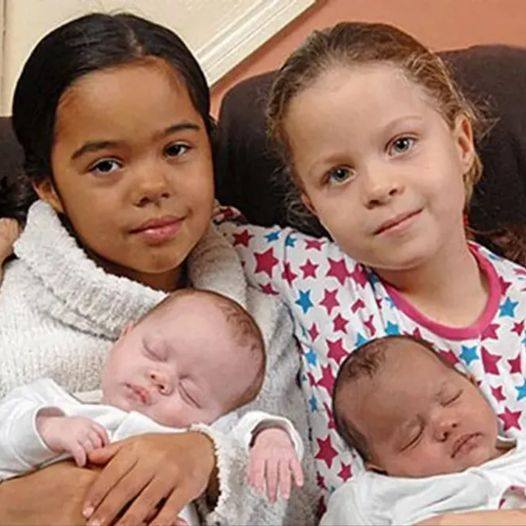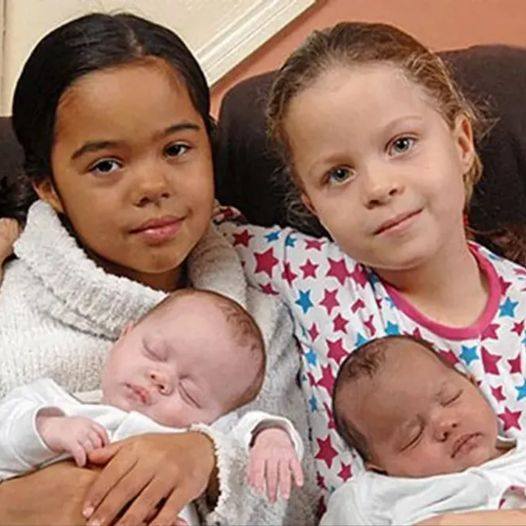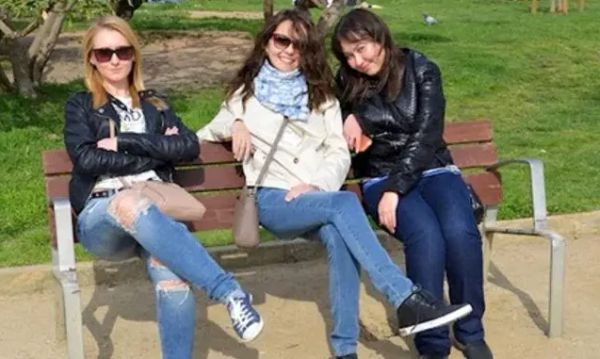
Meet the Durrant family, a truly remarkable and beautiful unit that has defied the odds. Alison Spooner and Dean Durrant welcomed their first set of twins in 2001, and their arrival attracted a lot of attention. But what makes this family truly unique is that they have not one, but two sets of twins with different skin colors.
Life on Earth is full of surprises, and sometimes the unexpected can be a source of joy and amazement. Alison and Dean may seem like your average couple, but their genes tell a different story. In 2001, their twin daughters, Hayleigh and Lauren Durrant, were born with different skin tones. One was white, like their mother, while the other was black, like their father.
When Alison and Dean learned they were having twins, they naturally assumed that their kids would resemble them. But the moment Laura and Hayleigh were born, they were in for a shock. Laura inherited her mother’s fair skin, blue eyes, and red hair, while her twin sister had her father’s dark skin, blue eyes, and red hair.
Naturally, their families and friends were amazed and had a hard time believing it. Although this occurrence is incredibly rare, it does happen from time to time. Growing up, the girls faced questions and disbelief from their classmates and even their own parents. But despite the challenges, they learned to embrace their uniqueness.

Now, as the twins have turned 18, they reflect on their journey. Hayleigh, who shares her father’s dark skin and hair, recalls the moments when people would doubt they were twins. “You’re lying; you’re not twins—prove it!” they would say. To settle the debate, the sisters would either recite their address or produce their passports. It’s entertaining to see people’s reactions when they realize that they are, in fact, twins with different skin colors.
For Lauren, who shares her mother’s green eyes and fair hair, most people simply think of her and her twin as best friends rather than sisters. And that’s perfectly fine with her, because her sister is her best friend.
The odds of twins born to biracial parents having different skin tones are 1 in 500, according to the BBC. And the amazing thing is, Alison became pregnant again, seven years later, with another set of twins. When Laura and Hayleigh were seven, their mother gave birth to Leah and Miya. And once again, the family made headlines because these two sisters also had different skin tones, making them the only family in the world with two sets of biracial twins.
Dr. Sarah Jarvis of the Royal College of General Practitioners explains just how rare this is. Even non-identical twins are uncommon, but having two sets of twins with different skin colors occurring twice is truly a one-in-a-million phenomenon.
Dean, a proud father, still finds it hard to believe. “I’m still amazed; it’s incredible,” he says. And the younger twins, Leah and Miya, are supported and guided by their older sisters, who they look up to as role models.
Despite their physical differences, the Durrant twins share a special bond. They finish each other’s sentences and often say the same things at the same time. They can even sense what the other is thinking.
The Durrant family is a shining example of embracing our differences and cherishing the unique qualities that make each of us who we are. They remind us that in a world full of surprises, love and unity are the most important things that truly make a family.
So next time you come across a family that challenges your expectations, remember the Durrants and be inspired to appreciate and celebrate our beautiful differences.





